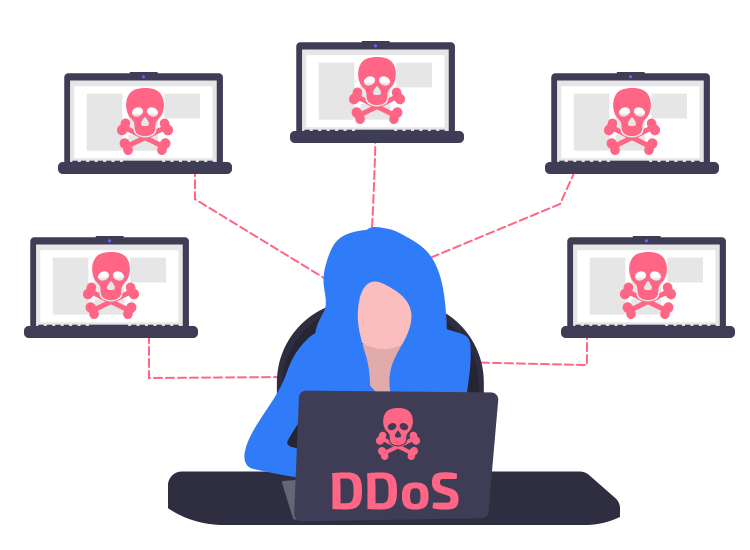What is a Denial of Service (DOS) attack and how can I prevent it?
What is a Denial of Service (DOS) attack and how can I prevent it?
What is a DOS strike?
A Denial of Service (DoS) attack is a destructive attempt to endanger the accessibility of a target system (such as a site or application) to genuine end-users. In a dispersed rejection of service (DDoS) attack, the opponent uses numerous jeopardized or corrupted resources to create the assault. Usually, the assaulter generates numerous packets or requests that ultimately overwhelm the target system.
DoS strikes usually are classified according to which layer of the Open Systems Interconnection (OSI) design they assault. They are most generally discovered in the network (layer 3), transport (layer 4), presentation (layer 6), and application (layer 7) layers.
DoS strikes happen when the activities of destructive cyber risk actors prevent legit individuals from accessing network resources such as information systems and also devices. Denial of service is accomplished by swamping the target host or connecting with traffic, blocking access to genuine customers till the target quits responding or collisions. Influenced solutions might include e-mail, websites, online accounts (such as banking), or other solutions that depend on the affected computer or network. Expense.
How Denial of Service (DoS) Assaults Work?
Denial of service attacks frequently targets companies‘ web servers, such as financial institutions, eCommerce, media companies, and government companies. Perpetrators assault a company’s resources by swamping the network with large amounts of data or sending malicious data, such as errors that trigger crashes. Whatever the technique, the purpose is the same – to collapse the network or computer system – and if the DoS victim is a different firm’s Web or cloud service provider, various other networks or properties not targeted by the DoS aggressor may also be impacted.
An even more hazardous type of DoS strike is called a distributed denial-of-service assault (DDoS assault). DDoS strikes can sidetrack firms from other criminal tasks such as data burglary or network intrusions. The attack is not a direct DoS attack in these typical attempted cases. Still, an attack carried out by numerous systems can interfere with or shut down any internet service.
The most substantial DDoS assault in the background took place in February 2020, when Amazon Internet Provider announced that it had driven away DDoS strikes of up to 2.3 terabytes per secondly in three days [3]
How to recognize a DoS assault?

Among the most apparent signs of a DoS attack is when a website or solution suddenly becomes slow or inaccessible. Nonetheless, similar performance problems can happen for different factors, consisting of legit web traffic spikes, and typically require more investigation. Web traffic evaluation tools can assist detect some indicators of such DoS attacks.
Suspicious web traffic from a single IP address or a series of IPs
There is significant web traffic from individuals sharing a solitary behavioral account, such as tool kind, geographical location, internet browser variation, etc.
- Inexplicable spikes in requests to a single web page or endpoint
- Spikes or abnormal patterns of web traffic at odd times of the day (e.g., spikes every 10 mins).
- Depending on the attack, there are other, more details indications of a DoS strike.
Harmful DoS
Denial of service can be brought on by genuine usage, as highlighted by the instance of a shopping site. As an example, rejection of service usually happens during Black Friday sales, when thousands of customers are searching for deals. Nonetheless, there are also situations of harmful intent. In this case, the assaulter purposely attempts to deplete the website’s resources and refute access to reputable individuals.
Vicious assaults can take two forms: the rejection of service (DoS) or dispersed rejection of service (DDoS).
The distinction between the two is complied with
Denial-of-service attacks utilize a small number of assault systems (occasionally just one) to bewilder a target. This was one of the most typical approaches to strike in the early days of the Web when solutions were pretty small and safety technology was in its infancy. However, simple DoS attacks are usually less complicated to handle today, as the attacker can be quickly detected and stopped. Nonetheless, there are significant exemptions in commercial control systems, where some devices have a reduced tolerance to undesirable traffic or are linked over low-bandwidth web links vulnerable to saturation.
In a dispersed denial-of-service assault, the aggressor enlists the aid of (countless) Internet individuals, creating a handful of demands cumulatively overwhelming the target. These individuals might be voluntary associates (e.g., attacks by loosely arranged groups of unlawful ‘protestors’) or defenseless victims whose computers are contaminated with malware.
The main difference between a legit denial of service (e.g., Black Friday browsing) and an assault is that strikes usually occur without warning. Consequently, planning services to handle the increased tons is difficult.
How can DoS assaults be prevented?

The basic general rule. The damages can be mitigated by discovering a continuous assault immediately. Below are some points you can do to shield yourself from this threat.
Method 1 : Blackhole course investigation
Access providers might utilize ‘great void routing.’ This guides excess web traffic to an open path, occasionally a great void. This prevents targeted websites and also networks from collapsing. The negative aspect is that reputable and rogue website traffic is pressed similarly.
Method 2: Mounting firewall programs as well as routers
Firewall software and routers should be established to reduce spurious website traffic. Remember to maintain routers and also firewall programs current with the latest security spots.
Method 3: Use safe protocols
Use SSL (Secure Sockets Layer), TLS (Transport Layer Safety), or IPsec encryption to encrypt the information before it leaves your computer system; configure your browser to send encrypted data over HTTPS connections immediately. To immediately send encrypted data over an HTTPS connection.
Method 4: Usage strong passwords
Rigorous password needs to make it harder for aggressors to guess weak passwords. Password complexity regulations differ widely depending on the degree of defense required.
Suppose you are unsure regarding the toughness of your present passwords. In that case, you can use a password mosaic to inspect your login information for prominent websites such as Yahoo, Twitter, Outlook.com, and Instagram.
Method 5: Usage anti-virus software application
Anti-virus software safeguards your computer against infections, worms, spyware, and other malicious code. If you do not currently have an anti-virus software application set up on your computer, take into consideration installing it currently.
Method 6: Maintain your Operating systems
Operating systems receive updates from taking care of insects and susceptibilities; upgrading your os will undoubtedly ensure your tool has the latest security features.
Method 7: Mount a firewall
Routers and firewall software can regulate the incoming and outward-bound network website traffic. If you have not currently, mount a firewall software in your house network.
Method 8: Stay clear of phishing sites
Phishing websites might show up to originate from a relied-on resource but are an attempt to fool individuals right into giving them individual info. They frequently appear to find in banks, online stores, media firms, and so on.
Phishing websites can also be avoided by using a VPN when seeing sensitive websites. Virtual private networks create a safe tunnel to public networks, supplying personal privacy and privacy.
Method 9: Update your web browser
When you see a site, your browser sends a request to the web server hosting the page. The web browser, after that, demands the server that sends the web page and presents the content it obtains.
Conclusion
Cyber-attacks are becoming increasingly typical and present a severe risk to people and businesses. The very best defense against cyber strikes is prevention. To safeguard on your own versus hackers, comply with these actions.
Enjoyed this blog post? For more please visit Stop web from spam.
The post What is a Denial of Service (DOS) attack and how can I prevent it? appeared first on Stop Web Form Spam.
https://media.istockphoto.com/vectors/hacker-attacking-server-or-database-network-security-database-secure-vector-id1185236506?k=20&m=1185236506&s=612x612&w=0&h=rQ1H82WaG28Hjqjb_RLYNrewKOk5y8vsvU6nMi3wY1s=
https://www.stopwebformspam.com/what-is-a-denial-of-service-dos-attack-and-how-can-i-prevent-it/?utm_source=rss&utm_medium=rss&utm_campaign=what-is-a-denial-of-service-dos-attack-and-how-can-i-prevent-it

Comments
Post a Comment